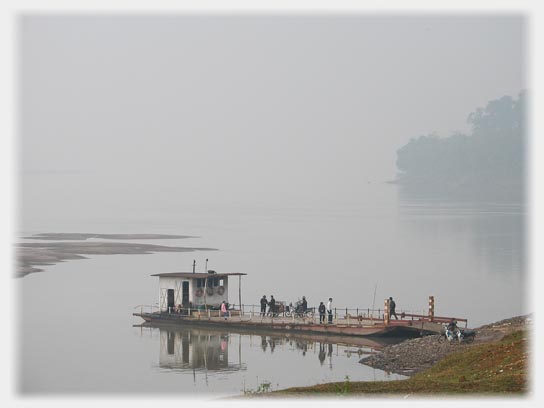
|
Objects
We think of our familiar world as peopled with definite objects: rivers, trees, motorbikes; these form the normal objects of our daily lives. The word has broader uses (understandably as it comes from the Latin for a thing presented to the mind) which is how philosophers use it. In this wider sense it is not just the boat that is an object, but also the taking of fares, the act of joining the boat for a certain time, or just waiting expectantly. In this sense it can be any thing, or action, or idea to which we can direct our minds.
An object according to the OED is a: "thing placed before the eyes or presented to one of the senses; a material thing (that can be) seen or perceived." And the broader use: "A thing or person to which action, thought, or feeling is directed; a thing or person to which something is done, or on or about which something acts or operates." It also has a number of other uses such as an end and a grammatical term.
Many objects have sharp edges, like the motorbikes, railings and pebbles in the photograph. When we extend the word to less tangible things we normally use the word fact. Facts like 'the motorbikes are on the boat' parade themselves as paradigms: objects are linked together and placed in a world.
Beyond the boat, the delicate mist has no edges, little can be identified. But out there we believe that there are objects arranged as facts waiting for us; ready to emerge as we move towards them, solidly awaiting their opportunity to become human percepts. Objects and facts are interconnected; it would be strange experience indeed if a tree were to emerge out of the mist disengaged from all facts. Nor can facts stand alone without their objects, the motorbike I ride onto the ferry is far from the abstractness of the linguistic entity we call a fact–fortunately.
There is a controversy in contemporary philosophy that "concerns the issue as to whether the world is made up of things or of facts. The more widely accepted view at the present time is, I think that the world is an aggregate of things or, as Heidegger would say, of entities, and that facts or states of affair are not included among the contents of the world but rather viewed as in some sense the artefacts of language."
This is in reaction to the kind of claim Wittgenstein was making at the beginning of the 'Tractatus': "The World is the totality of facts, not of things." This hints at the way he is tending to describe language as working in a very particular (and maybe strange) way, making it much more like a mathematical language. than a natural language, a shift Wittgenstein himself is less comfortable with in his later writings.
Throughout our lives material which is obscure, shadowy, hidden, emerges out of that mist, and comes into the light; becomes an object for us. This process of emergence is fundamental to human consciousness.
References
- Frederick Olafson (1993) 'The Unity of Heidegger's Thought' in 'The Cambridge Companion to Heidegger' p. 104
- Wittgenstein, L. (1922) 'Tractatus Logico-Philosophicus' Routledge, London. 1.1
27th September 2014 ~ 28th July 2015